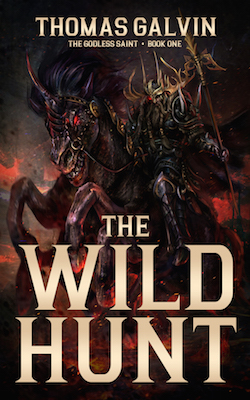What happened to the other dollar?
Belal Muhammad, a UFC welterweight, posted this two years ago, and it just came up in my TimeHop:

This is a really good brain teaser, and it shows why it’s hard to be good with money. The short answer is that the $49 owed to each friend is debt, while the $1 you have is cash on hand. These are two different things, and adding them up won’t always equal zero.
This one is a brain-breaker, so let’s walk through it step-by-step.
To start with, Friend A and Friend B each have $50, and nobody else has anything.
| Person | Has | Is Owed | Owes |
|---|---|---|---|
| Friend A | $50 | $0 | $0 |
| Friend B | $50 | $0 | $0 |
| You | $0 | $0 | $0 |
| Microwave Dude | $0 | $0 | $0 |
| Total | $100 | $0 | $0 |
Right now, there’s $100 total floating around: remember that number, because there should always be $100 floating around.
But there are two more important facts:
The amount in “Is Owed” and the amount in “Owed” are equal to each other. This should always be true.
The total amount of money floating around doesn’t equal either “Is Owed” or “Owes”. Sometimes they will, and sometimes they won’t.
Now, Friend A gives you $50:
| Person | Has | Is Owed | Owes |
|---|---|---|---|
| Friend A | $50 | $50 | $0 |
| Friend B | $50 | $0 | $0 |
| You | $0 | $0 | $50 |
| Microwave Dude | $0 | $0 | $0 |
| Total | $100 | $50 | $50 |
Now you have $50 and Friend B has $50, so there’s still $100 total floating around. And, “Is Owed” and “Owes” are equal to each other, which is another one of our requirements.
But here’s what’s important: the amount you owe, and the amount of money floating around, won’t necessarily always be the same. Because if you just gave each friend back their $50, the total amount of money floating around would still be $100, but “Is Owed” and “Owes” would both be $0.
So we know a few things:
- The total amount of money floating around should always be $100
- “Is Owed” and “Owes” should always be equal
- If you add up “Is Owed” and “Owes”, they won’t necessarily equal “total money floating around”
Now, Friend B gives you $50:
| Person | Has | Is Owed | Owes |
|---|---|---|---|
| Friend A | $0 | $50 | $0 |
| Friend B | $0 | $50 | $0 |
| You | $100 | $0 | $100 |
| Microwave Dude | $0 | $0 | $0 |
| Total | $100 | $100 | $100 |
There’s still $100 total floating around, and “Is Owed” still equals “Owes”.
Now, you give $97 to Microwave Dude to pay for your new appliance:
| Person | Has | Is Owed | Owes |
|---|---|---|---|
| Friend A | $0 | $50 | $0 |
| Friend B | $0 | $50 | $0 |
| You | $3 | $0 | $100 |
| Microwave Dude | $0 | $0 | $0 |
| Total | $97 | $100 | $100 |
There’s still $100 total floating around, and “Is Owed” still equals “Owes”.
Now, you start paying back your friends, and give Friend A $1:
| Person | Has | Is Owed | Owes |
|---|---|---|---|
| Friend A | $1 | $49 | $0 |
| Friend B | $0 | $50 | $0 |
| You | $2 | $0 | $99 |
| Microwave Dude | $0 | $0 | $0 |
| Total | $97 | $99 | $99 |
Look at what happened here: our debt no longer equals the total amount of money floating around, because we’ve started paying that debt back. From here on out, unless we borrow more cash from our friends, “total money floating around” will not equal “is owed” or “owes”.
However, “is owed” and “owes” will always equal each other.
Now, you’ll give Friend B $1:
| Person | Has | Is Owed | Owes |
|---|---|---|---|
| Friend A | $1 | $49 | $0 |
| Friend B | $1 | $49 | $0 |
| You | $1 | $0 | $98 |
| Microwave Dude | $0 | $0 | $0 |
| Total | $97 | $98 | $98 |
Now we have all the same numbers in the original post: you owe both friends $49, and you have $1.
But 49+49+1 (the dollar I had) equals 99 what happened to that other dollar???
Here’s what’s really going on: the $49 and $49 are in the “Is Owed” column, so they should equal the “Owes” column … and they do!
And the total amount of money floating around is still $100, so no money has vanished.
But, and here’s the key, the debt doesn’t equal the total amount of money anymore, because you’ve started paying it back.
 TM
TM






